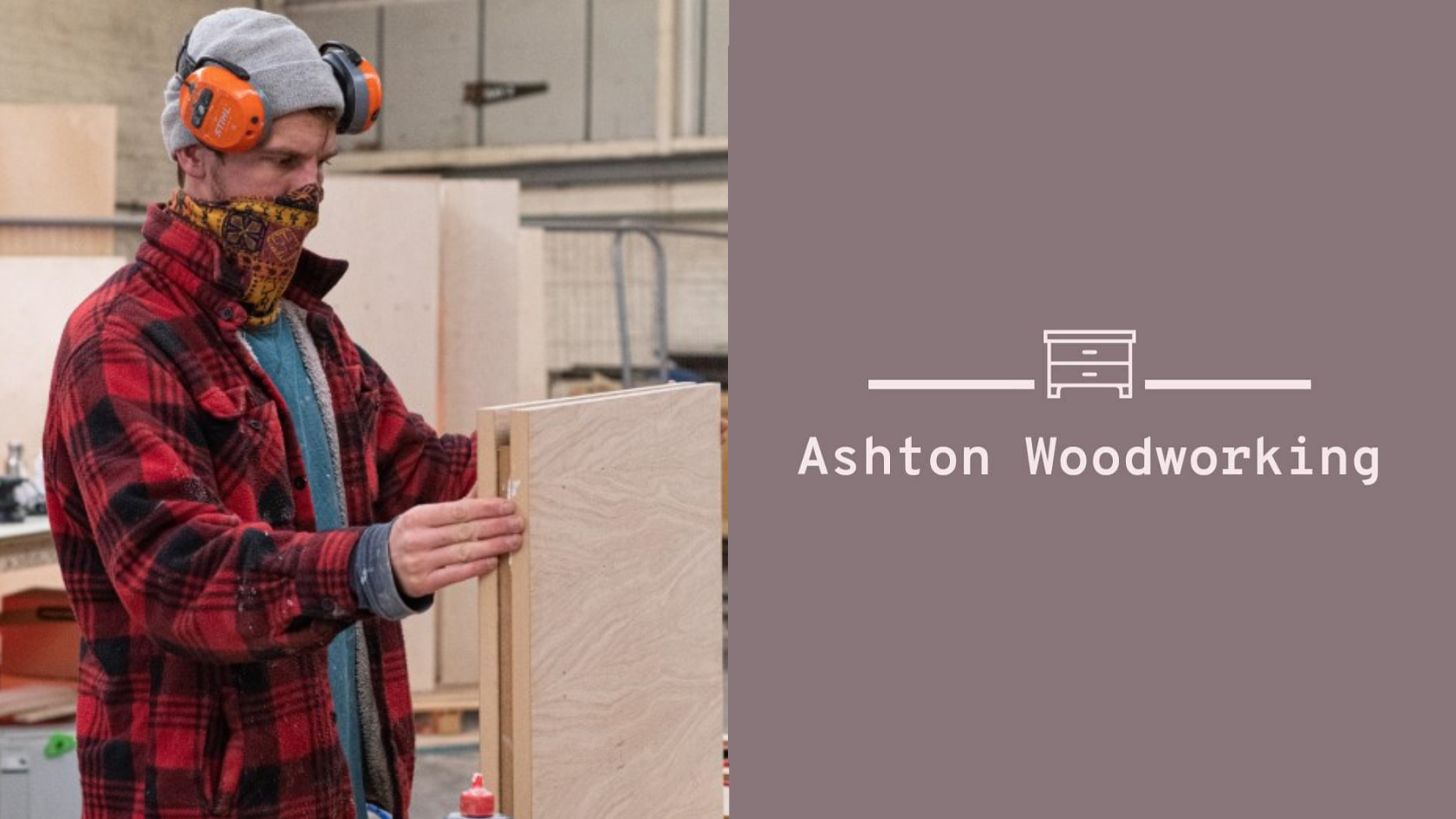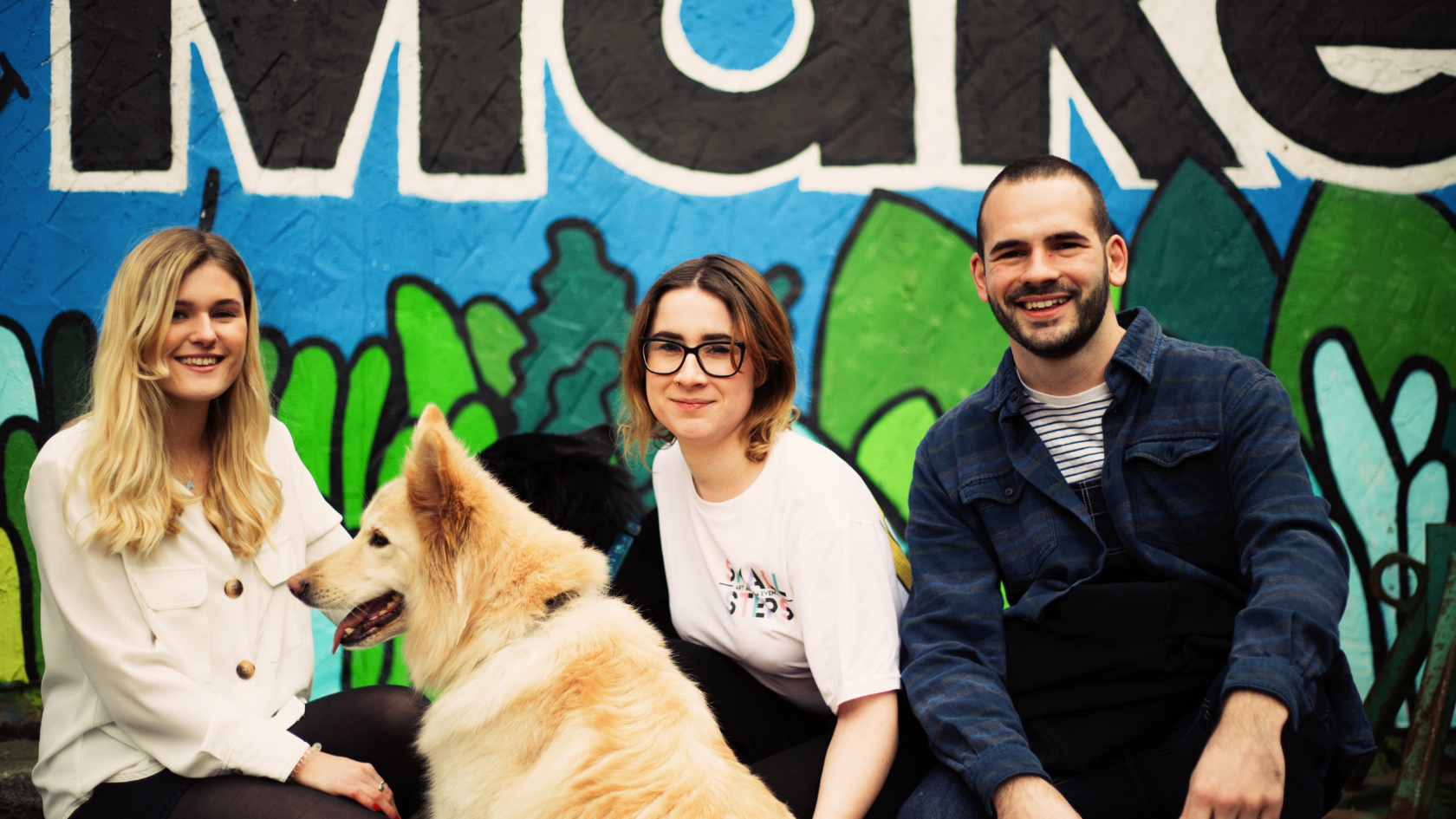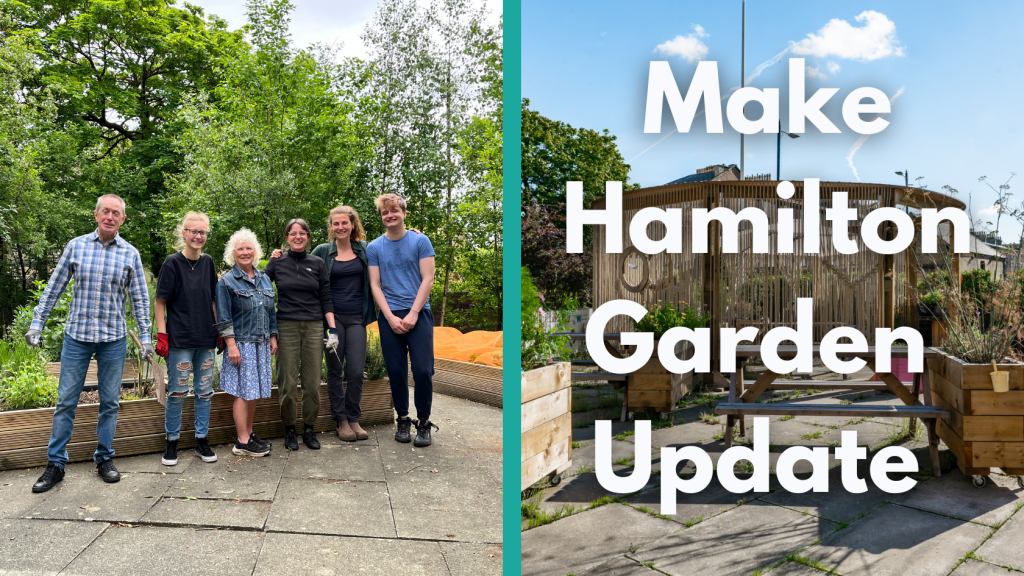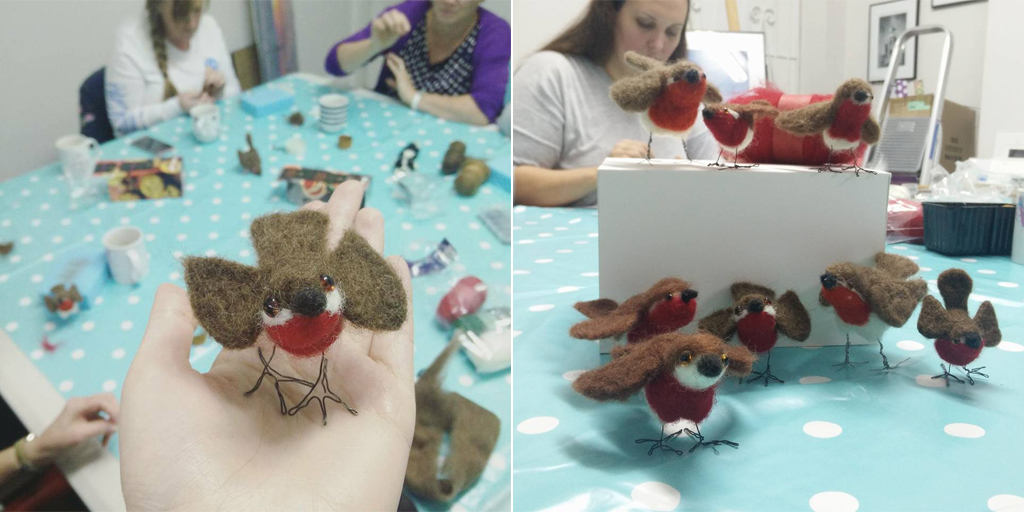We’re back with March’s monthly maker. This month I chatted with North Docks resident and woodworker, George Ashton. We met in our North Docks hire space with the very apt sounds of the workshop providing the soundtrack to our chat. Have a read on to find out more about Georges woodworking journey and what it involves. And how you can get yourself some lovely bespoke furniture.
Hi George, can you tell us a bit about what you do?
I make bespoke furniture, mostly fitted. This includes things like wardrobes, alcoves, bookcases, and sometimes kitchens. Occasionally, there are interesting little quirky jobs. Last year I made a folding bar which was really interesting. And I’ve just been asked to make some interesting garden furniture. It’s nice to make some different furniture occasionally to mix things up a little bit.
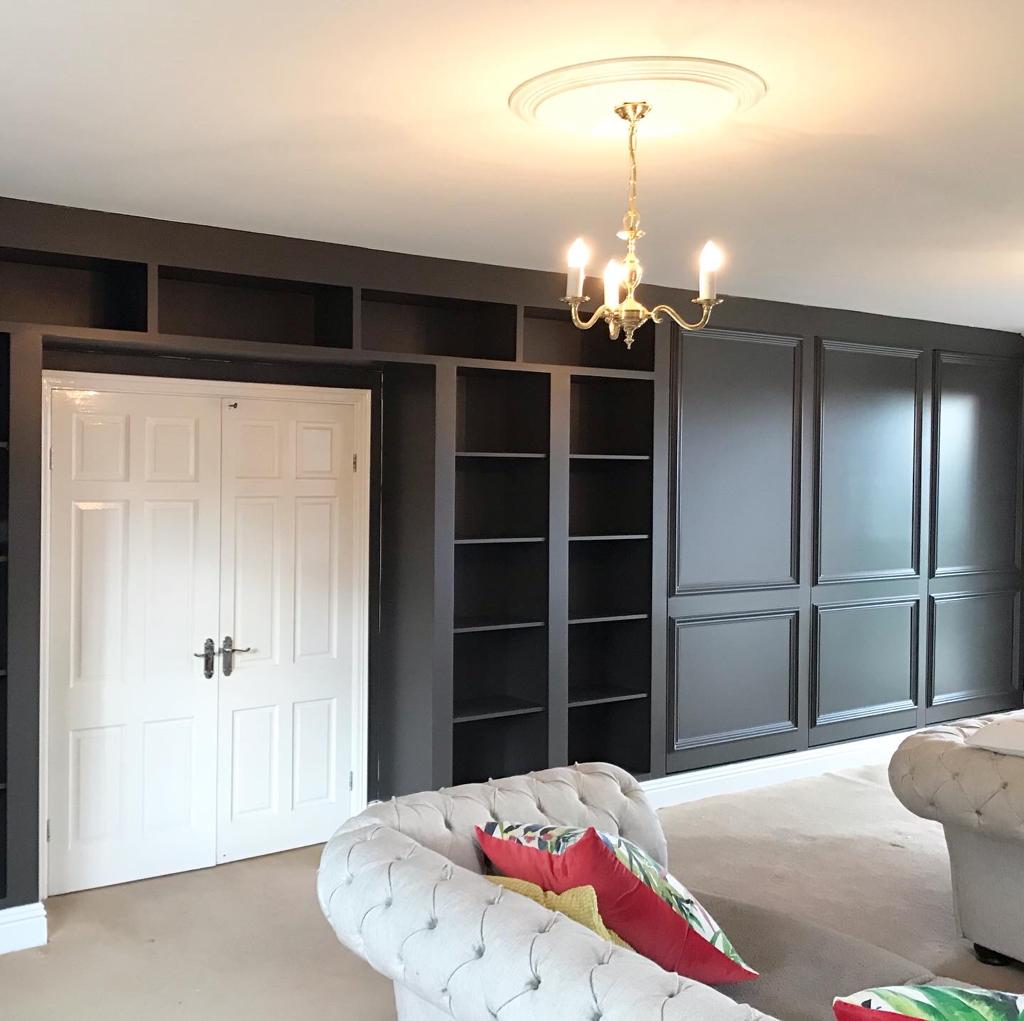
Can you tell us a bit about your process?
I start by measuring the space where the furniture will be. I then consult with the customer and work out what materials and styles they want, what type of doors or how many doors and shelves they need. We discuss how they wanted it to be finished, whether that’s painted or made out of solid wood or veneer, or they might want it oiled or lacquered. Once we’ve worked all of that out I’ll order all of the materials, get it cut, and make it in the workshop. I do every part of the process except now I try to get my materials cut off-site, so it’s more precise and efficient.
Sometimes if I need an extra pair of hands my dad will come and help me in the workshop, so I’m trying to get him in regularly. I would like to get an apprentice in the next year or so.
What’s your favourite part of the process?
I like being in the workshop. I like shutting the door and getting on with the stuff on my own. There’s the making side, then the painting and the fitting but the making part is definitely my favourite.
View this post on Instagram
How did you get started in woodworking?
I got a part-time job working for a cabinet maker while I was at Uni. I met him while I was a volunteer and he was a woodland ranger. I worked there for about 6 months and really enjoyed it. He actually offered me a job in Sheffield where I was at the time, but I wasn’t ready to settle down yet.
I worked for my mum in her hotel boat business for about 3 years. So I had a few years of doing bits and bobs and going travelling, and then I decided to get back into woodworking. I messaged a few people in Stockport where I’m from and a guy called John took me on and I was with him for about 3 years, he taught me everything. After that, I wanted to set up for myself so I came to Make.
Woodworking wasn’t something I thought about doing until I was about 24 and trying to decide what I wanted to do with my life. Nothing had really piqued my interest as much as the woodworking had. I initially wanted to get into timber framing but I couldn’t find anywhere up north to do it. At Uni I studied Geography and did woodland management for my dissertation, so I learnt about the guys who do timber framing, they spend the winter growing the materials themselves. The plan was to do this for a couple of years and go into timber framing but I probably wouldn’t now. With what I do now it’s more about getting that perfect finish and the appearance.
View this post on Instagram
What has been one of your favourite projects you’ve worked on?
Just before Christmas, I did two jobs for the same customer. One of the jobs was a bar in the kitchen. After I had done my part the guy fitted a really nice quartz worktop and tiled behind it, and I went back in and finished it off with the shelves. Most of my work is in MDF but that kitchen was done in oak so it looked really good. I also did a big office for the same customer. An interior designer designed that job and passed the designs on to me to make. Usually, I do the designs myself but it was nice to get designs from someone who is trained in designing.
View this post on Instagram
What are you working on next?
This week I’ve just started some wardrobes which is quite an interesting piece. It’s got three massive sliding doors and integrated lights.
I’ve also been teaching myself how to use Sketch Up. It’s a 3D modelling design software, it can be quite complicated if you’re a bit rubbish at computers. I used to do all of my drawings by hand in 2D, but this software is great because you can create a design piece by piece on the software. It’s helpful because when I put a design together initially, I realised that the way I designed it with the sliding doors there would have been a few gaps. To see it all visually in 3D means you can make your mistakes there before you make them in real life.
How have you built up your clientele?
Initially, I was just advertising on Facebook and Instagram. Last year I had lots of flyers printed off that I never ended up using because I was lucky that I’ve just been really busy through word of mouth.
Did the lockdown affect your business? I know a few people who built some back garden pubs!
The first lockdown was quite quiet. Luckily my mum’s house needed decorating so that gave me something to do. Generally, since then it’s been pretty steady though so not too bad.
What would your advice be for anyone who wants to work for themselves?
My mistake was that I didn’t really plan it enough when I first started. I just expected to hit the ground running, I didn’t anticipate the first few months being quite slow in terms of getting work in. I wish I had a bit more money saved up for that initial first period.
But I would definitely say to invest in tools. It’s not worth buying the cheap tools because you end up buying them twice otherwise. And make sure you plan things out well.
Also, don’t undervalue yourself. That was one of my problems at first, it took me a while to get my prices right. I was working for barely anything in those first 6 months. You work out a quote and it seems expensive so you knock yourself down for no reason. You have to factor in all your bills and materials and time. If you want anything handmade you’ve got to be willing to pay for it. It’s tough getting your prices right.
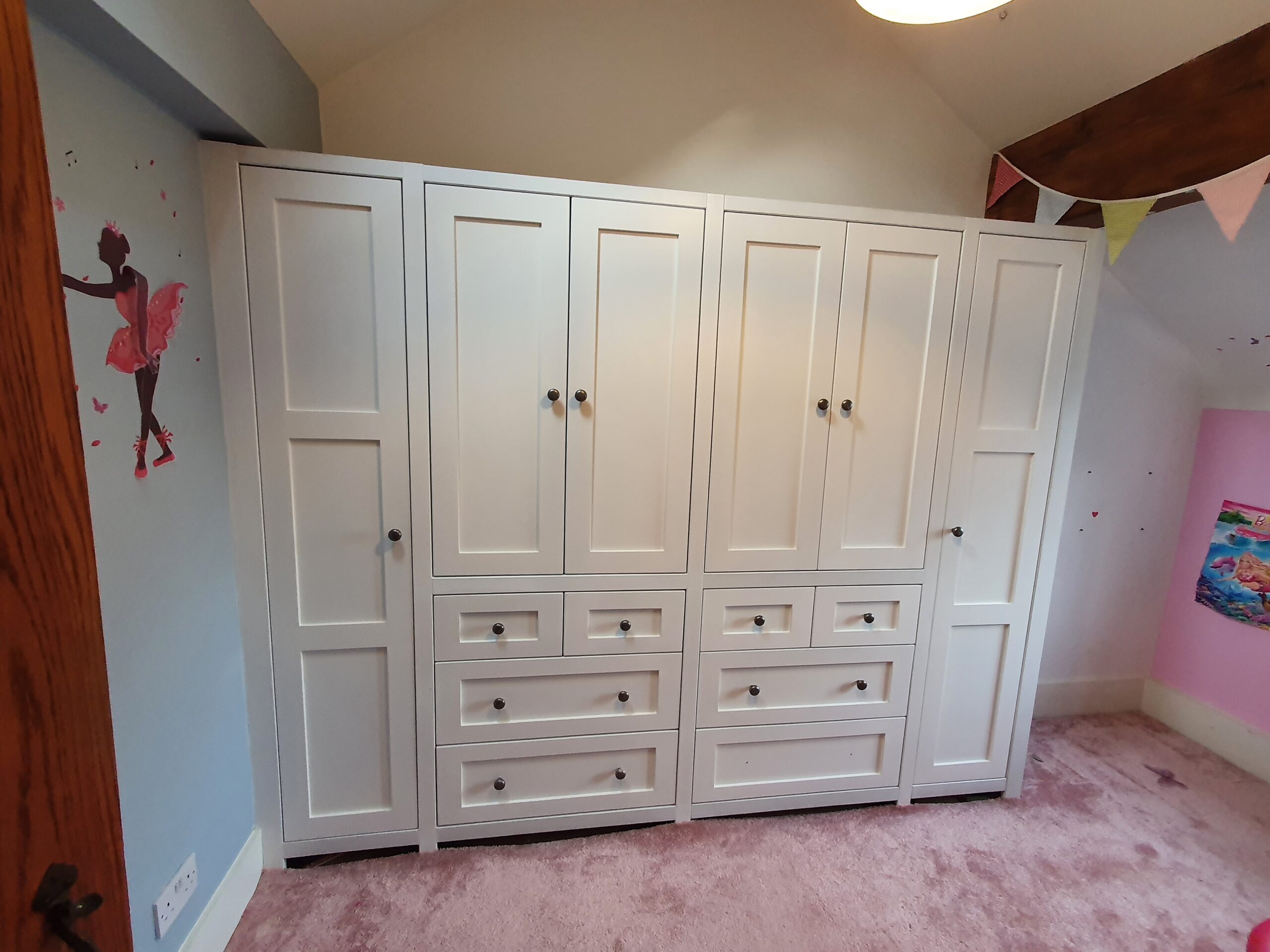
You started off as a member at Make, what’s it been like to work your way up to a studio?
When I first joined Make I was a member of the workshop, it was nice to have the summer dossing about a bit and working on things in the workshop. I got a nice big job, so I moved to one of the big project bays in the workshop which was good. It was great because I could just leave my tools there instead of loading and unloading them every day. When I started to get more work in, I was able to move into my own private space.
There aren’t not many workshop places like this in the North. In the future, it would be great to have a bigger space to have people working with me.
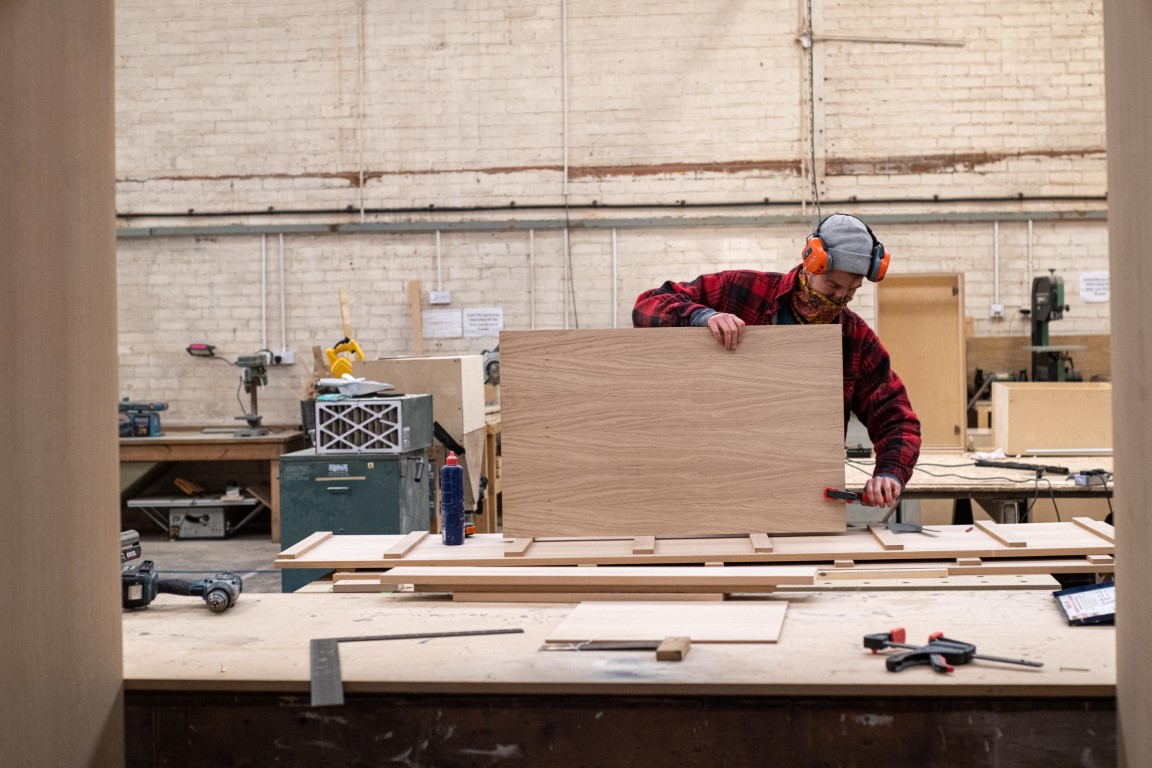
I’ve worked with some of the residents which has been great, Including with Tommy* on a project recently. Another resident, Jamie, made me some jigs on his CNC machine. It’s handy having other people around who specialise in different areas. When I first started I was having a few issues with my spraying, Harry who does signwriting gave me some painting advice. Me and Tommy are always exchanging ideas, and it’s good to sometimes be able to lend tools from people or learn new ways of doing something you’ve always done a particular way and might find a new efficient way of doing things.
*Fellow Make North Docks resident and woodworker – check out his work. (link)
Have any of the Make residents inspired you to incorporate any new skills into your work?
Henry (the welder) made me some legs for a table once which was nice. I’d love to learn some blacksmithing but I think it would just be a hobby. It takes so long to get to a standard where you can start charging people for your work.
Have you learned any new skills or interesting things?
Just Sketch Up at the moment, Tommy gave me a quick lesson in it. I’ve only got the free software so I might upgrade to the paid one. Once you get the hang of it there are animations you can do where the doors open and close and you can see the inside of them.
Where can people find your products and services?
I have a website but I mainly use Instagram and Facebook. Get in touch for more info.
Want to become part of our community or become a member of our workshop?
Find out more about workshop HERE and get in touch to join the Make community! hello@makecic.org
Follow us on TWITTER, INSTAGRAM and FACEBOOK to stay up to date with what’s happening at Make.







